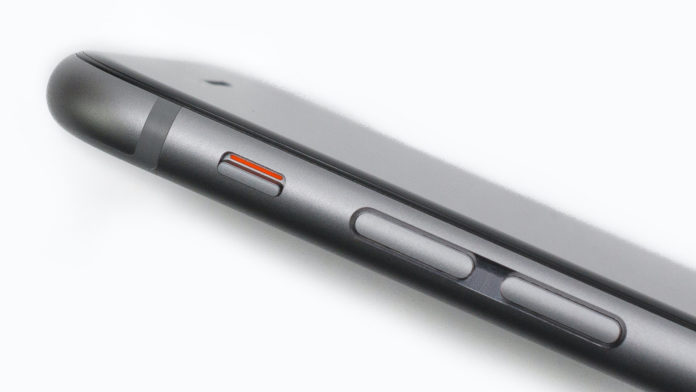It’s not uncommon for the volume button not working on iPhone and iPad devices. We have to look at different aspects to determine the root cause and identify, whether this is a hardware problem or a software problem. Of course, we will provide an alternative solution to the physical buttons, if you are not planning to take it to the Apple Service Center. However, I rarely use the volume buttons, and there is a chance to stiffen the buttons. Let us look at the solutions to determine its status and look at the possible alternative.
Volume Button Alternative
I was introduced to the iPhone back in 2014, and it has a virtual button on the screen, which mesmerized me. I loved it at the first glance and continued to use it to this day on iOS devices. Yes, the volume buttons are working perfectly, yet, I prefer the virtual button on the screen. Let me show you how to enable it in the iOS 15 or earlier versions.
- Open the “Settings” app.
- Choose “Accessibility” in the Settings.
- Choose “Touch” under the “Physical and Motor” section.
- Tap on the “AssistiveTouch” feature.
- Toggle to enable the “AssistiveTouch” feature.
- Assistive Touch will appear on the screen right after enabling it.
The button covers some part of the screen, and it is bothersome on older devices with smaller displays. But, it is handy enough to eliminate the necessity of a physical volume button, and it should serve the purpose for a while.
Increase & Decrease Volume without Physical Buttons
Enable Assistive Touch in the iOS 15, and I have shown you in the first tutorial itself. Yes, it is enough to increase/decrease volume without using the physical buttons.
- Tap on the Assistive Button on the screen.
- Choose the phone icon to view more options.
- Tap on the volume icon with more bars to increase volume.
- Tap on the volume icon with fewer bars to decrease volume.
Wasn’t that simple? Of course, it is a hassle to tap twice or three to access the volume triggers, but I recommend the users customize it. Yes, I have shown you below, where to find the customization section.
Customize Assistive Touch (Recommended)
Customizing the Assistive Touch is possible, and I added Volume Up/Down button in the first panel. Now, you don’t have to tap twice or thrice to decrease or increase the volume anymore in iOS 15. Let me show you the fastest way to move the volume buttons in the Assistive Touch first section.
- Open the Settings and choose Accessibility.
- Choose “Touch” under the “Physical and Motor” section.
- Tap on the AssistiveTouch > Customize Top Level Menu.
- There are six icons there, but I want to add two more icons, so tap on the “+” icon located at the bottom right side.
- I have added two menu options and tap on the first one.
- Swipe down to tap on the “Volume Up” button and then tap on “Done” to add it.
- Go back and tap on another one.
- Choose “Volume Down” and then tap on “Done” to save it.
- Volume buttons have been added in the first panel.
- The volume buttons have appeared in the Top Level Menu.
Now, you can increase or decrease the volume in two taps, which is not bad at all considering the physical button state. I have gotten used to the AT feature despite having a smaller screen-sized iPhone.
Clean your iPhone and iPad
A survey has proved that smartphones have germs equivalent to a toilet seat. Now is the time to clean your iPhone or iPad with a dry cloth. Cleaning always makes a difference, so do not hesitate to wipe the screen, housing, ports, and physical buttons. Try to remove the dust from small spaces but do not use brute force in the process and never utilize sharp objects to reach thin areas.
iOS Software Upgrade
Apple releases iOS updates regularly because they want the software to be stable and efficient. Of course, if your iOS device is plagued by the threat, then it will remove it as well.
- Tap on the Settings > General > Software Update.
- Let iPhone or iPad search for an update.
Update the software, if a new version is available on the device. Make sure to read online videos and reviews to ensure version stability, and it should be specific to your iOS device. Create a backup in the local storage and iCloud as a precautionary measure.
Restore iOS Software
Older iOS devices that are no longer entitled to receive any software updates can restore the iOS operating system. Corrupted iOS software doesn’t function properly, and misconfiguration also plays a crucial role in it. You can open iTunes to create local backup and install fresh iOS software on the same device. Of course, you have to put the iPhone or iPad in Recovery Mode, which is fairly easy. I have covered how to Restore iPhone in this tutorial and learn how to put the iOS device in Recovery Mode.
Contact Apple Engineer
The last resort is to contact an Apple engineer for further assistance because it might be a hardware problem.
What would I do, if I were in your boots?
I would stick to the Assistive Touch because the volume buttons don’t serve any other purpose. Except going into the Recovery Mode or DFU Mode, which is an important feature, if something goes wrong in the iPhone or iPad.
Final Words
I have shown you several ways to resolve the volume button not working in any iOS device. Assistive Touch is my go-to solution, and you can consider replacing the physical volume button. But I implore the readers to approach the certified Apple Service Center to avoid complications down the line.


